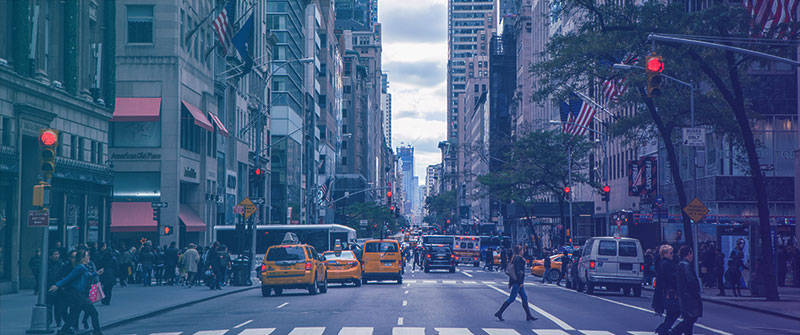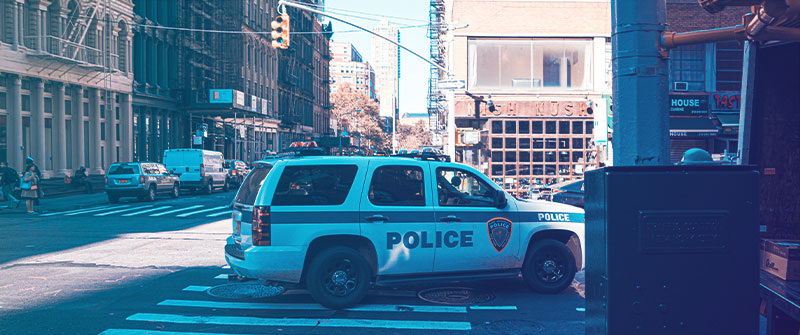The US government has had fighting crime as one of its important tasks. During his presidential campaigns, President Donald Trump had made fighting crime his core mission. His administration has allocated resources to this cause to ensure the crime rates drop. Listening to how people complain about crime in the US, one may think that the crime rates are very high and keep increasing. In fact, many people are of the opinion that the crime rate in the US has been on the rise over the years. However, crime statistics indicate a different reality.

The crime rate in the US varies depending on many factors. Geographically, different states and regions record different crime rates. The rates in each geographic location also differ depending on the type of crime. Some crimes are more prevalent in some places than in others. Several social factors influence these disparities in regional crime rates.
To be able to understand the crime situation in the US, one must look at it from different contexts. You need to understand how crime has evolved over the years. You also need to have a grasp of the global crime outlook. Finally, you need to understand the distribution of crime in terms of type and geographical incidence.
The US Crime Rate Ranking in the World
The US ranks highly in the global crime statistics rankings. In terms of total crimes, it ranks first. However, that ranking is majorly due to its massive population. The US has one of the highest populations in the world. Only India and China outrank the US in terms of population.
By mid-2020, the US had a crime index of 46.73. That places it at position 49 on the global crime rate rankings. In 2019, the US ranked 45th with a crime index of 47.13 and a safety index 52.87. Among the countries in the Americas, the US ranked 18th on crime rates.
The US ranks highly in some crimes while it has low crime indices in some crimes. Violent crime, whit guns involved is one of the crimes in which the US outranks every other country. It has a high gun crime index that could be due to its high gun ownership rate of 88.8 per 100 residents. Its murder rate is around 42.01 per million people. While the country ranks first in terms of rape crimes, its index for this crime is 27.3, placing it 9th. The US ranks 55th globally on intentional homicides with a crime index of 5.30.
These statistics indicate that while the US outranks all countries in terms of reported crimes, its crime rate is relatively low. That is because it has fewer crimes happening per 100,000 people compared to other countries. It shows the effect of population size on crime rates and total crimes. While the big population results in higher crime numbers, the crimes are spread across a big population, bringing the crime rates down.
A key part of the US crime statistics is the population. As the population grows, crime numbers will also keep growing. However, the number of reported crimes does not reflect the crime rates. While reported crimes may increase, crime rates may be decreasing. That is because the crime rates compare the number of crimes against the population.
The population of the US is projected to keep growing in the foreseeable future. With a projected average population growth of 0.9% per year, the US is bound to reach a population of about 400 million in a few decades. That means its reported crimes will keep increasing. However, the crime rates may drop. That will depend on the increase in crimes relative to population. The government’s efforts to reduce crimes may see a drop in the crime rates despite the increase in population.
Crime Statistics in the Last 30 Years
Violent crime rates have been on the decrease in the past 30 years. From the 1990s to 2019, the US has recorded continued decreases in the crime rates despite the increasing numbers in crimes. Statistically, there was a 51% decrease in violent crime rate between 1993 and 2018.

Property crime such as burglary, theft, and motor vehicle theft has also recorded declines in rates for the period ranging from 1993 to 2018. FBI statistics show that property crime rates fell by 54% from 1993 to 2018. Many factors have been behind this consistent decline. One major factor is the improvement in security systems over the years. For instance, improved security features for cars has seen a substantive decrease in motor vehicle theft.
Although the national murder rate had an increase between 2015 and 2016 to 5.4 from 4.4 in 2014, it went back to sustained decrease afterwards. Big cities like Chicago had a massive contribution to this statistic as its number of murders rose from 478 to 765 between 215 and 2016. Some people opposed to criminal justice reforms used the brief spike in homicides in some cities during these two years to push their views of a cresting crime wave.
While violent crime has been on the decrease, one category seems to be problematic. According to 2018 statistics, the rates for rape increased even as other crimes dropped. The upsurge in this category has been consistent from 2013 when the FBI changed its definition for rape. In the change, they replaced the structure of the definition from one centered around forceful to one anchoring on consent. Between 2013 and 2018, the increase in the rape rate has been 18%.
The increasing rape cases over the years may be a result of one factor. Rape is one of the most unreported crime. The new numbers may indicate that more people are coming out to report rape than previous years. Campaigns such as the #Metoo Movement may have played a big part in encouraging victims to report, leading to higher numbers in recent years. By 2017, about 40% of rape victims were reporting to police unlike in earlier years when the rate was less than 25%.
Social Profile of Crime
There is a relationship between crime and social dynamics in a population. For instance, there seems to be higher incidence of crime in regions, cities or neighborhoods with fewer economic opportunities. Violent crime is especially prevalent in financially disadvantaged populations. Thus, an improvement in economic conditions is likely to lead to a reduction in crime rates in a given area.

The link between social status and crime rates can be seen in the crime patterns in some cities and neighborhoods. For instance, Memphis and Albuquerque have high rates of poverty. The two cities also struggle with crimes. Baltimore, a city struggling with violent crime, has several social issues crippling it. It has high corruption rates coupled with poverty. There is also a breakdown of police-community relations. These social issues could be part of the reason for the high violent crime rates in the city.
Poverty levels may play a role in crime levels in some instances. This holds especially for property crimes. Theft is usually high in neighborhoods with a high poverty rate. The rates of burglary, motor car theft and robbery are higher in cities that have wide wealth disparities between the rich and the poor. That is because the challenging conditions of the poor may force some people to commit crimes for survival. Petty theft and burglary may be a way for survival.
Another factor that contributes to high crime rates is drug use. Drugs have a big effect on one’s body. Intoxication can lead to impaired judgement. A person under the influence of substances may not be capable of reasoning or making sound judgments. They may end up committing crimes they would otherwise not have committed. Drugs may give a person a false sense of invincibility, making them more likely to commit violent crime. Drug addiction can also lead to a rise in property crimes. People may resort to theft, robbery and burglary to get money to meet their drug habits. Thus, areas with a high prevalence of drug use tend to have high rates of crime.
Generally, some demographics tend to have higher crime levels compared to others. First, younger populations record higher crimes, both violent and property than the aging populations. Similarly, males are more likely to commit crimes than females. In the US, about 70% of the arrests for criminal activity are males.
Looking at crime from the lens of race, Whites and Hispanics contribute the highest proportion of crimes in the US. They account for 69.3% of the total arrests. Blacks account for 28.1% of the arrests while American Indians or Alaskan Natives account for 1.4%. Asians or Pacific Islanders make up the remaining 1.2%. in terms of their respective populations, Blacks committing crime account for 6.8% of the population while American Indians or Alaskan Natives are 4.6% of their population. The Whites and Hispanics committing crime are only 2.9% of the population while Asians and Pacific Islanders are 0.7% of the population. These statistics indicate that Whites and Hispanics contribute the highest number of crimes although their rates are low due to the huge population size.
Social theories suggest that crime is highly likely in lower class neighborhoods. According to theories such as the broken window hypothesis, decay in a neighborhood is likely to attract criminal activity. The disorder in such neighborhoods to put people off so that few would spend time outdoors. That makes the areas vulnerable to criminals as they find the conditions ripe for their criminal activity.
Geography of Crime
There is a higher likelihood of violent crime in urban areas than in other areas. Some cities account for a huge proportion of the crimes in their given states. Even in some of the safest states, some cities still record crime rates that exceed the national averages. Different factors play into the resultant crime rates in the different states across the US.

In 2019, the US had an average violent crime rate of 381. Maine was the safest state with a crime rate of 112 while the District of Columbia was the most dangerous with a crime rate of 996. Three other states recorded very low crime rates of 200 and under. The three other safest states are Vermont with a rate of 172, New Hampshire with 173 and Virginia with 200.
In recent years, there have been different changes in terms of crime in different cities and States. In Chicago, crimes dropped by 10% in 2017 while violent crime dropped by 11%. Robberies and aggravated assaults in Chicago fell by 18% and 5% respectively while homicides fell by 13%. While the rates for most crimes have been dropping, Chicago reported a 1% increase in rape rates in 2017. Although the crime rates seem to be dropping in Chicago, the rates are still higher than the national average.
Similar to Chicago, New York and San Francisco have had drops in crime rates in the past few decades. Specifically, New York has had a sharp decline in crime compared to other cities in the US. In 2017, there was a 1.4% decline in crime rates while violent crimes increased by 1.5%. Although the city had an 8% increase in homicides, its murder rate remains about 30% lower than the national average.
In San Francisco, the homicides declined by 18% while rape crimes declined by 14%. In general, violent crimes in San Francisco dropped by 7% in 2017. Property crimes dropped by 5% with burglaries falling by 16%. In 2018, San Francisco reported the third highest property crime rates for cities with populations of 500,000 and over. Only Memphis and Albuquerque had higher numbers. The high property crime rates in these cities can be attributed to the disparities between the rich and the poor.
One city that has had an upward growth in homicides is Philadelphia. In 2018, it recorded a 10% increase in homicides. The upward trend in murders has however been there from 2013. In 2019, violent crime in Philadelphia rose by 4%. Homicides rose by 1% while robbery and aggravated assault accounted for most of the spike in violent crimes. While the crime rates were as high as 909 in 2018, it was the lowest since 1990.
Some people may argue that there is a relationship between immigration and crime. Some argue that immigrants are responsible for a rise in violent crime. However, statistics indicate that immigrants are less likely to commit violent crimes compared to US citizens. A good example is the city of El Paso, Texas. Other than the massacre by a shooter in 2019, El Paso would have had 10 homicides. That would have been within the range in the past decade where the number of homicides ranged between 10 and 20 per year.
In Baltimore, the types of crime had different changes in 2019. While murders increased, robbery, burglary and homicides dropped. In general, the number of reported crimes dropped by 6% with violent crimes dropping by 2.5%. Rape decreased by 26% and homicides dropped by 10%. Due to the high rates, Baltimore ranks high among cities with high rates of violent crimes. The two other cities that rank higher than Baltimore are Memphis and Detroit.
The Denver crime rate for 2020 was 3.1 for violent crimes and 21.1 for property crimes for every 1,000 residents. Domestic violence was at 1.3 with sexual assault being 0.4. Car thefts, thefts, and burglaries were at 4.5, 1.3 and 3.5 respectively. The reported violent crimes rose by 1.5% in 2020 from 2019. Similarly, property theft went up by 11.0%. The Denver crime rate is higher than the US average for both violent crimes and property crimes.
Check out our list of the 21 most dangerous cities in the U.S.
Summary

People have different perceptions about the crime rates in the US. Most think that the rates are high. However, such claims are not backed by data. Statistics show that while the number of crimes may be going up, the rates are going down. That can be confusing as people would expect the rates to rise with the number of crimes. However, the crime rates are a measure of the number of crimes relative to the population. Thus, as a population increases, an increase in number of crimes may not result in an increase in the rate of crime. The number of crimes will be spread over a bigger population, resulting in a lower rate.
Some crimes seem to be more prevalent in some areas than in others. That may lead people to link crime to certain factors observable in such areas. For instance, poverty draws attention as a possible cause for an increase in crime. Some cities record high crimes in neighborhoods with high rates of poverty. Property crime is especially high in areas with great wealth disparities. Similarly, some people blame immigration for high rates of crime. However, all these claims lack a solid basis. That is because some cities have recorded results that debunk such claims. For instance, El Paso has a high proportion of immigrants. However, it has one of the lowest homicide rates in the US. Some states like New Jersey, with very low poverty rates also record high rates of violent crime.
